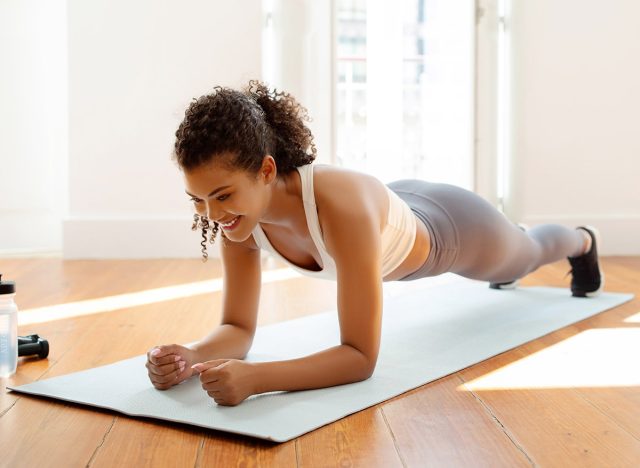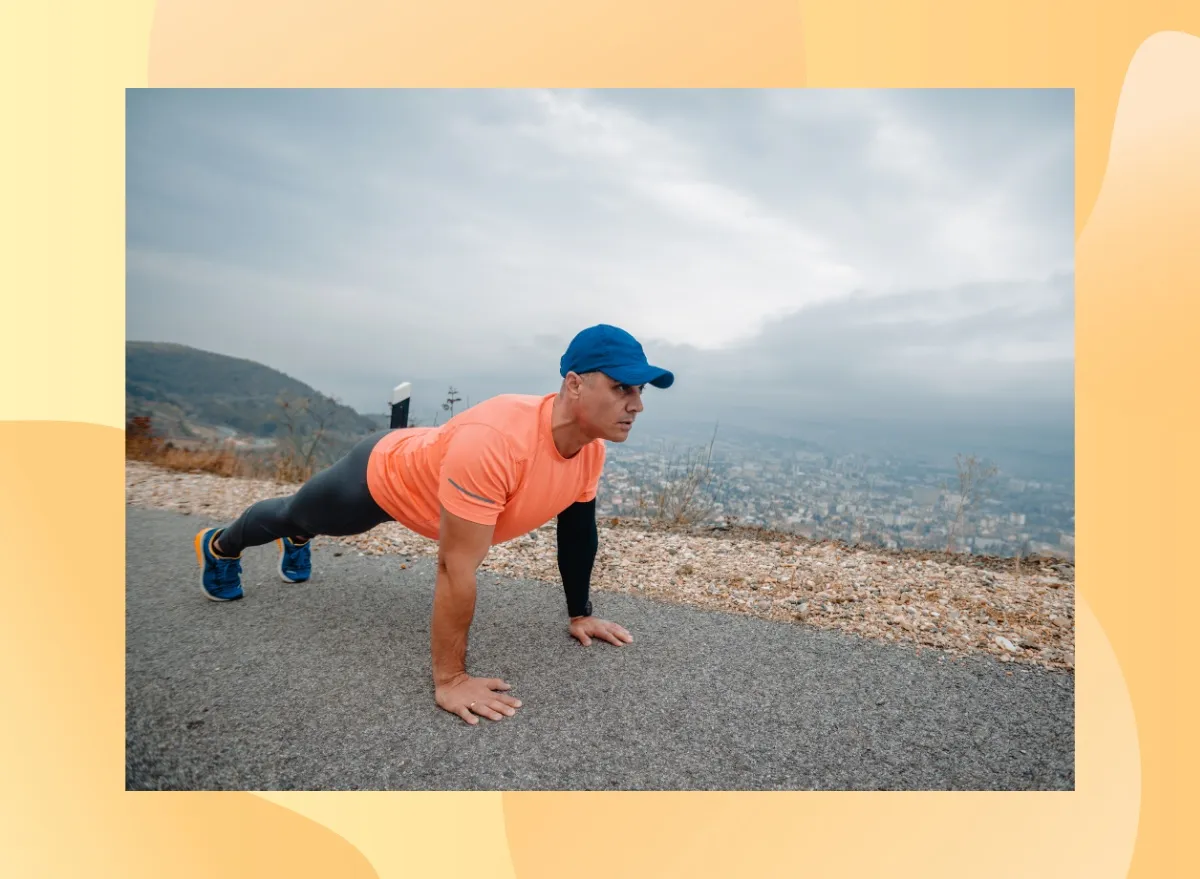Think you have a strong core? This ultimate core test will challenge your endurance, stability, and total-body control. The 1-minute plank challenge is a deceptively simple way to measure your core strength and mental grit. It might sound easy, but once the clock starts ticking, those seconds can feel like an eternity, especially if your form starts to break down.
A strong plank isn’t just for show; it directly reflects how well your core supports your entire body. Whether lifting weights, sprinting up a hill, or carrying groceries, a stable core helps you move more efficiently and avoid injury. If you struggle to hold a plank for a full minute, it might indicate that your core muscles, shoulders, glutes, and lower back need some extra work.
So, are you ready to put your core to the test? Drop into position, focus on your form, and see where you stack up. Your results might surprise you, but no matter where you land, there’s always a way to improve.
How to Do the 1-Minute Plank Test

- Get Into Position: Start in a forearm plank with elbows directly under your shoulders, forearms parallel, and hands flat or clasped. Keep your feet hip-width apart.
- Engage Your Core: Squeeze your glutes, tighten your abs, and keep your body in a straight line from head to heels. Avoid sagging hips or a raised butt.
- Breathe and Hold: Take slow, controlled breaths and focus on maintaining perfect form for up to 60 seconds.
- Watch for Common Mistakes: Don’t let your lower back arch or your shoulders creep up toward your ears. If you start to shake or lose form, stop the test and note your time.
Once you complete the test, check your time against the ranking breakdown to see where you stand!
How Do You Rank? A Breakdown of Results

The goal is simple: hold a proper forearm plank for one full minute without sagging at the hips, arching your back, or shifting weight improperly. Once you finish, check your score:
- Beginner (0-30 seconds): Your core needs work. Strengthening your abdominals, lower back, and shoulders will help improve endurance.
- Intermediate (30-45 seconds): A solid effort! You have a decent foundation, but there’s room to build more stability and endurance.
- Advanced (45-60 seconds): Strong work! You have impressive core control and endurance. Keep pushing yourself to increase time and difficulty.
- Elite (60+ seconds with perfect form): You’ve mastered the plank! To keep progressing, try adding variations like weighted planks or instability challenges.
How to Improve Your Plank Score

If you struggled to make it to a minute, don’t worry; progress happens with consistent effort. Here’s how to level up your core strength:
- Train Core Endurance: Incorporate exercises like dead bugs, hollow holds, and bird dogs to reinforce core stability without fatigue.
- Strengthen Supporting Muscles: Strengthen your glutes, shoulders, and lower back with exercises like glute bridges, shoulder taps, and kettlebell carries. Your core is more than just your abs; your training needs to reflect this.
- Use Progressive Overload: Gradually increase your plank hold time by adding five to ten seconds per session. Minor improvements lead to significant gains.
- Perfect Your Breathing: Proper breathing prevents early fatigue. Take slow, controlled breaths to keep your muscles engaged without tensing up.
- Test and Retest: Track your progress by testing your plank hold once a week. Aim for steady improvement, even for a few extra seconds. Consistently challenging yourself will help build endurance and reinforce proper form.
- Breaking through plateaus: If you reach a plateau, try plank variations—such as side planks, weighted planks, or instability planks—to target your core from different angles and keep progressing.
Tips & Tricks to Nail the 1-Minute Plank Test

- Engage Everything: Keep your core, glutes, and quads tight to avoid collapsing.
- Maintain a Neutral Spine: Avoid arching your lower back or letting your hips sag. Your body should form a straight line from head to heels.
- Fix Your Elbow Position: Keep your elbows under your shoulders to prevent unnecessary strain.
- Focus on Consistency: Instead of holding a shaky plank for a long time, prioritize shorter holds with perfect form.
Jarrod Nobbe, MA, CSCS









